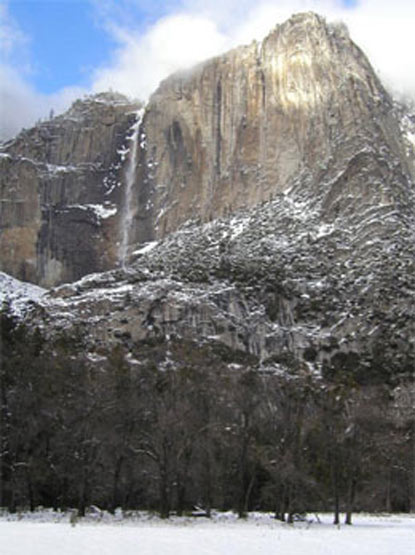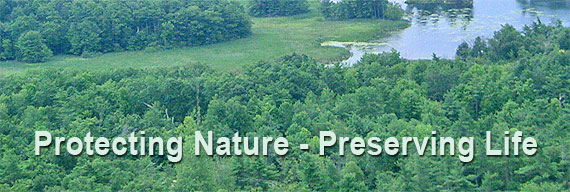Chapter 4
Snow Banners
But it is on the mountain tops, when they are laden with loose, dry
snow
and swept by a gale from the north, that the most magnificent storm
scenery is displayed. The peaks along the axis of the Range are then
decorated with resplendent banners, some of them more than a mile long,
shining, streaming, waving with solemn exuberant enthusiasm as if
celebrating some surpassingly glorious event.
The snow of which these banners are made falls on the high Sierra in
most extravagant abundance, sometimes to a depth of fifteen or twenty
feet, coming from the fertile clouds not in large angled flakes such as
one oftentimes sees in Yosemite, seldom even in complete crystals, for
many of the starry blossoms fall before they are ripe, while most of
those that attain perfect development as six-petaled flowers are more
or less broken by glinting and chafing against one another on the
way down to their work. This dry frosty snow is prepared for the grand
banner-waving celebrations by the action of the wind. Instead of at
once finding rest like that which falls into the tranquil depths of
the forest, it is shoved and rolled and beaten against boulders and
out-jutting rocks, swirled in pits and hollows like sand in river
pot-holes, and ground into sparkling dust. And when storm winds find
this snow-dust in a loose condition on the slopes above the timber-line
they toss it back into the sky and sweep it onward from peak to peak
in the form of smooth regular banners, or in cloudy drifts, according
to the velocity and direction of the wind, and the conformation of the
slopes over which it is driven. While thus flying through the air a
small portion escapes from the mountains to the sky as vapor; but far
the greater part is at length locked fast in bossy overcurling cornices
along the ridges, or in stratified sheets in the glacier cirques, some
of it to replenish the small residual glaciers and remain silent and
rigid for centuries before it is finally melted and sent singing down
home to the sea.
But, though snow-dust and storm-winds abound on the mountains, regular
shapely banners are, for causes we shall presently see, seldom
produced.
During the five winters that I spent in Yosemite I made many excursions
to high points above the walls in all kinds of weather to see what was
going on outside; from all my lofty outlooks I saw only one
banner-storm
that seemed in every way perfect. This was in the winter of 1873, when
the snow-laden peaks were swept by a powerful norther. I was awakened
early in the morning by a wild storm-wind and of course I had to make
haste to the middle of the Valley to enjoy it. Rugged torrents and
avalanches from the main wind-flood overhead were roaring down the side
cañons and over the cliffs, arousing the rocks and the trees and
the
streams alike into glorious hurrahing enthusiasm, shaking the whole
Valley into one huge song. Yet inconceivable as it must seem even to
those who love all Nature's wildness, the storm was telling its story
on the mountains in still grander characters.

|













